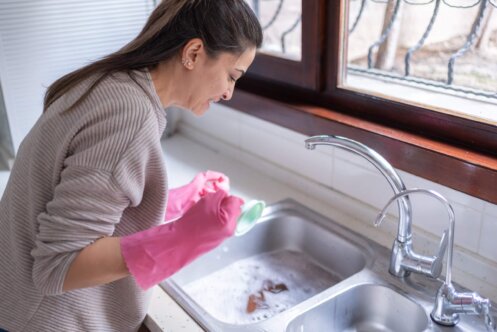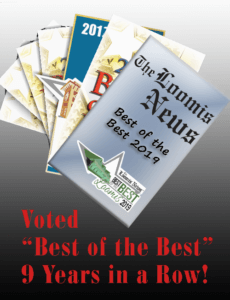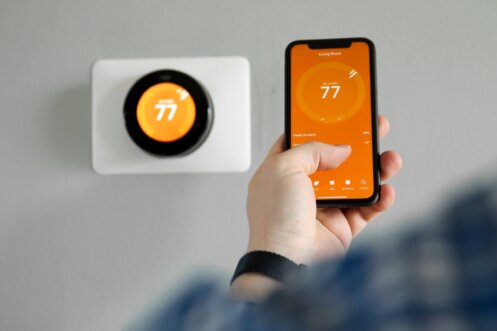The Right Way to Dispose of Fats, Oil, and Grease for Healthy Pipes
If you are a homeowner in Sacramento, CA or the surrounding area, we implore you not to put fats, oil, or grease down your drain. Of course, we understand how it can happen. You have just made a wonderful fried chicken dinner for the family or have cooked Sunday morning’s bacon. After cooking, you are left with a bunch of oil or grease and do not know what to do with it. The kitchen drain is right there, so down your pipes it goes. Unfortunately, while convenient, getting rid of fat, oil, or grease in this manner can wreak havoc on your pipes.
Today, we want to show you what qualifies as F.O.G. so you can avoid putting it down your drain. We are also going to go over exactly what can result from the improper disposal of fats, oil, and grease. Finally, we are going to go over the correct way to deal with these kinds of waste so that your pipes continue to work properly and efficiently.
What Contains and Constitutes F.O.G.?
It is understandable to be confused when it comes to all the various fats, oils, and greases that should not go down your drain. There are likely foods you might not even think of as containing F.O.G. To help make it simple, here are various types of foods to avoid disposing of in this manner:
- Salad dressing
- Meat fats
- Butter and margarine
- Food scraps of items cooked in oil
- Dairy products
- Baked goods
- Sauces
- Cooking oil
- Shortening
Results of Improper Disposal
Let’s get back to the earlier scenario of the leftover bacon fat or the oil used to cook the fried chicken. It makes sense to pour it down the drain since it’s liquid, right? Well, for one thing, once it cools, oil and fat do not stay that way. The bacon fat will thicken and harden. The cooking oil that was used to make the fried chicken now has chicken fat in it. Oil is already thicker than water, which makes it difficult to move through your drains. Add chicken fat to it (which will resolidify), and you have a recipe for disaster.
When you send F.O.G. down your drain, you risk, at minimum, a slowdown of your water draining due to an accumulated buildup along the walls of your pipes. Worse than that, you can wind up with a full clog of your system. Depending on the depth of the clog and its magnitude, clearing out the problem could require anything from a snake to hydrojetting service. There is also the possibility of the clog being so severe that it causes enough water pressure to build up that the pipe can burst. This can wind up being a very expensive repair job.
It is also important to note that the drainage system in your kitchen is interconnected with other areas of your home. Therefore, if you were to dispose of fats, oils, and grease down the drain, you could potentially cause a sewage overflow issue. This could lead to not only hefty repair costs for your pipes but also expensive cleanup efforts.
The repercussions of a sewage overflow may not be contained within your home, as it could also impact your landscaping and even your neighbors. Thus, it is advisable to avoid pouring fats, oils, and grease down your kitchen drain to help prevent such problems and better protect your plumbing, home, and surroundings.
How to Properly Dispose of F.O.G.
There are actually numerous options for properly disposing of your fat, oil, and grease. Opting for any of the following disposal methods will help you avoid inconvenient and costly plumbing problems
Collecting It to Go in the Trash
One of the most popular methods of properly disposing of F.O.G. is to collect it in a simple receptacle when it cools. You can use a coffee can, a Mason jar, milk cartons, or a Styrofoam container. It is best to use a container you can seal to prevent leakage, but even an empty soda can work in a pinch. Once it hardens, you can go ahead and put it in with your regular trash. For a small amount, you can simply line the top of the trash in your kitchen with paper towels and pour or scrape the cooled F.O.G. onto those. To add extra insurance against leaking, you can double-bag your trash before taking it out.
Composting
Composting is often mentioned as an environmentally friendly way to dispose of F.O.G. However, it’s important to avoid composting animal fats in your home garden, as they can create a rancid smell and attract scavengers like raccoons or rodents. The same guidelines apply if you are using a compost bin provided by the city of Sacramento — avoid adding animal fats unless the city specifically allows it.
When it comes to vegetable oil, use caution. Only small amounts should be added to compost, as too much oil can clog the soil and slow down the decomposition process, similar to how it can block a drain. Stick to minimal quantities of vegetable oil to avoid any issues.
Reuse Grease and Cooking Oil
You can reuse your fats and cooking oils as long as you store them properly. To do so, strain off any food material once it is cooled. After it hardens, you can go ahead and store it in an airtight container in your fridge or freezer. Just be sure to give it a couple of sniffs before each time that you use it. If the F.O.G. smells off, then it has gone rancid and should no longer be used. If you cannot tell by sniffing it, rub a little between your fingers. If it is sticky and tacky, then it has gone bad. If it is smooth, then it is likely still good.
Recycling
Sacramento offers free weekly curbside pickup of used cooking oil. If you have used motor oil, they will pick this up too (just do not mix the two). To have it picked up, you collect the oil in its original container or a plastic one that has a secure lid. You then simply put it out with your regular trash, at least 3 feet away from your garbage bin. It is collected on the same day your garbage is collected. The only limitation is that each container can hold no more than three gallons.
Your Sacramento Drain Experts
If you are in the Sacramento area, have made the mistake of putting F.O.G. down your drain, and now have a drain issue, Crystal Blue Plumbing, Heating & Air has you covered. We have been providing drain solutions to the Sacramento community since 1976. We have the experience, tools, and knowledge needed to offer the right solutions that will get your drains back to smooth and reliable operation.
Our expertise is not only relegated to plumbing either. We are a go-to, one-stop shop for all of your heating and cooling needs as well. That means that we are here for you for anything from a drain cleaning to the installation of a new HVAC system. For more on the wide range of services Crystal Blue Plumbing, Heating & Air provides for our Sacramento neighbors, give us a call today.








